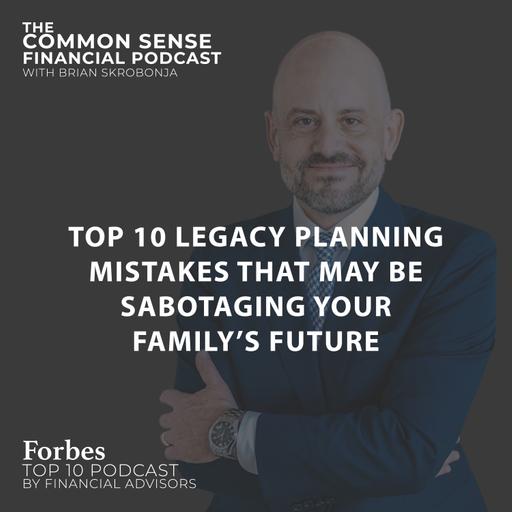
16 Jul 2025 06:00
Top 10 Legacy Planning Mistakes That May Be Sabotaging Your Family’s Future
Brian Skrobonja talks about the essentials of building a multi-generational legacy that lasts. He breaks down a blueprint rooted in time-tested principles and inspired by the same structural thinking used by families like the Rockefellers. Tune in to hear the assumptions that leave heirs rudderless, the mistakes that breed entitlement, and why conventional financial tools often fail under the weight of multi-century ambitions.
Whether you're building wealth or preparing to pass it on, this episode will challenge your thinking and equip you with a legacy framework designed to stand the test of time.
- Brian starts by reframing real financial success. It’s not just what you accumulate—but what you pass on. Without intentional legacy planning, families risk watching their values and vision fade after just one generation.
- Mindset 1—The absence of active legacy planning. Too many families assume wealth will transfer naturally from bank account to mindset. But without a clear plan, the next generation never learns—and that’s how legacies crumble.
- According to Brian, active legacy planning is not built on ticking a checkbox. You need a blueprint that makes everything else—governance, communication, liquidity—actually work.
- Brian says, “In every family I’ve worked with, eventually the time comes and one question rises: What happens when we’re no longer here to steer the ship?” Most families don’t answer that until it’s too late.
- For Brian, legal paperwork alone won’t cut it. True generational planning requires a living, breathing roadmap that captures your values, evolves with your family, and keeps everyone aligned for decades.
- Brian highlights a dangerous myth: “Signing a will means we’re done and everything will be taken care of.” In reality, active planning means constant alignment, revisiting, revising, and re-engaging the whole family.
- Use Brian’s four-part legacy framework to build clarity and momentum.
1. Define your why—write down what your wealth is for.
2. Create a manifesto, explain it plain English, and make it accessible to all.
3. Invite the next generation—have low-pressure and honest conversations with the next generation.
4. Always revisit your plan—keep it alive, current, and reflective of your evolving world.
- Mindset 2—Scarcity thinking sabotages legacy. Fear of spending or deploying capital kills bold moves, breeds conservatism, and shrinks your family’s vision for impact.
- How to overcome a scarcity mindset. Audit your past decisions for fear-based choices. Then reframe with an abundance vision and build purpose-driven allocation buckets that multiply impact.
- Mindset 3—Secrecy and poor communication. Brian explains that when wealth conversations stay behind closed doors, heirs grow entitled, misinformed, or resentful.
- Mindset 4—The next generation cannot learn wealth management through osmosis. Watching you isn’t enough. They need education.
- Mindset 5—Lacking a unified multi-generational strategy. For Brian, a will or a trust isn’t enough. Without a cohesive blueprint, every generation is forced to reinvent the wheel, wasting time, money, and vision.
- Mindset 6—Weak governance weakens families. Brian highlights that good intentions and informal chats aren’t enough. You need clear roles, rules, and decision frameworks to keep wealth and relationships intact.
- Mindset 7—The over reliance on conventional tools. If your portfolio is all accounts and products, you’re missing the chance to create a private banking system that cushions volatility and funds opportunity.
- Brian highlights the need for flexibility. Have an inventory of tools, understand their limits, then build liquidity through mechanisms like build banking. This ensures your strategy stays stable, resilient, and future-ready.
- Mindset 8—Poor cash fl
